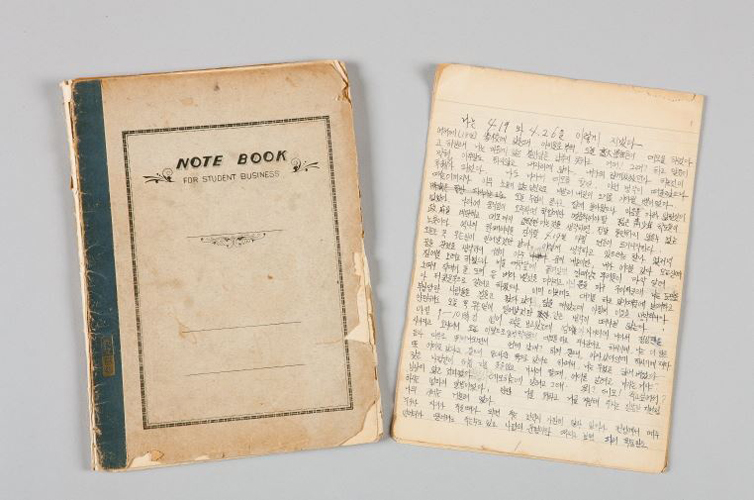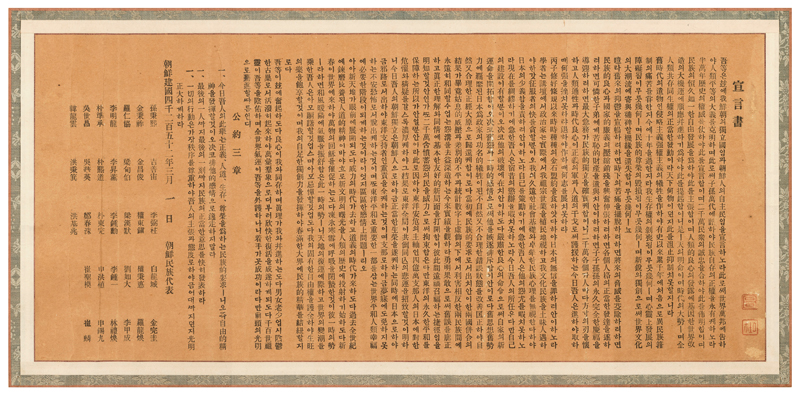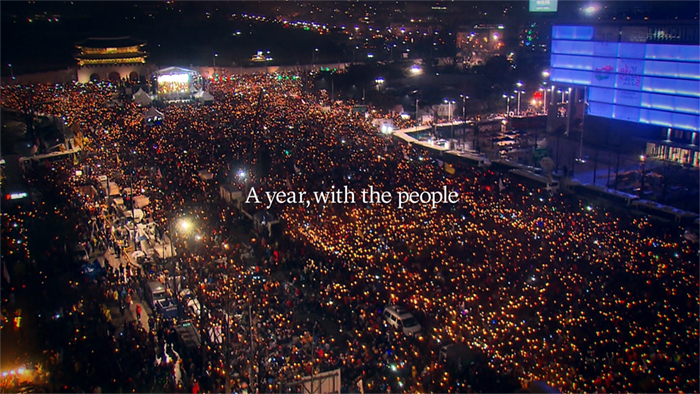- 한국어
- English
- 日本語
- 中文
- العربية
- Español
- Français
- Deutsch
- Pусский
- Tiếng Việt
- Indonesian
By Honorary Reporter Diana Kassandra Almarez from Philippines

This is a diary containing a vivid account of the April 19 Revolution written by a female high school student named Lee Jae-yeong who participated in the protest at the age of 18. (National Museum of Korean Contemporary History)
Korea's April 19 Revolution this year marks its 60th anniversary. This movement overthrew the first president of the Republic of Korea, Rhee Syngman, and his authoritarian regime. Through the keywords of "bureaucracy," "power" and "freedom," I will discuss how this significant event occurred and shaped the Korea of today.
Bureaucracy
Toward the end of Japanese colonial rule, the elite ruled the country. In 1948, Korea held its first elections and promulgated the Constitution, which formed a democratic republic that upholds the rights and freedom of the people and pursues a free market economy. This was also the time when Rhee was elected the country's first president; he would be reelected two more times.
The country's democratic ideals were promising, but President Rhee resorted to bureaucratic authoritarianism. On March 15, 1960, the presidential election was held again but people protested over electoral fraud committed by the government. On the same day, people and students in Masan, Gyeongsangnam-do Province, staged rallies against such fraud, and they were suppressed by authorities.
Demonstrations were initially peaceful but turned violent after police started to open fire on demonstrators. High school student Kim Ju-yeol was killed by a tear bomb and his body was found floating in waters off Masan on April 11. This news triggered a larger and more violent protest on April 19, and more people including professors joined the students in another rally on April 25. Many were killed and wounded as a result, but in the end, the people forced Rhee to resign and flee the country.
Power
Power is usually associated with the ruling class or an authoritarian government, but also the people – citizens, scholars, workers and the lower class. The latter form of power created efforts that eventually led the country's push toward freedom and democracy.
Middle and high school and college students sparked the April 19 Revolution. Bureaucracy during the Joseon Dynasty saw hints of democracy as it faced criticism from intellectuals, government watchdogs and advisory committees. The power of these figures eventually led the first mass demonstrations for freedom in Korea: the March First Independence Movement of 1919. The country also held its first elections and produced the Constitution after liberation in 1945.

The Declaration of Korean Independence was announced by the thirty-three national representatives of the March First Independence Movement in 1919. (Cultural Heritage Administration)
Freedom
Since the 1960 revolution, Koreans have kept watch on the nation's preservation of democracy and freedom. The revolution is a symbol of democracy in Korea, even being mentioned in the Constitution's Preamble:
"We, the people of Korea, proud of a resplendent history and traditions dating from time immemorial, upholding the cause of the Provisional Republic of Korea Government born of the March First Independence Movement of 1919 and the democratic ideals of the April Nineteenth Revolution of 1960 against injustice, having assumed the mission of democratic reform…"

The Korean people have since not allowed any government to suppress democratic principles over the decades, as seen in the Candlelight Revolution of 2016. (Korea.net YouTube)
The Korean people have since not allowed any government to suppress democratic principles over the decades, as seen in the May 18 Gwangju Democratization Movement of 1980, the June Democracy Movement of 1987 and the Candlelight Revolution of 2016. This shows the meaning of freedom and democracy to Koreans and the latter's efforts to preserve them.
chaey0726@korea.kr
*This article is written by a Korea.net Honorary Reporter. Our group of Honorary Reporters are from all around the world, and they share with Korea.net their love and passion for all things Korean.